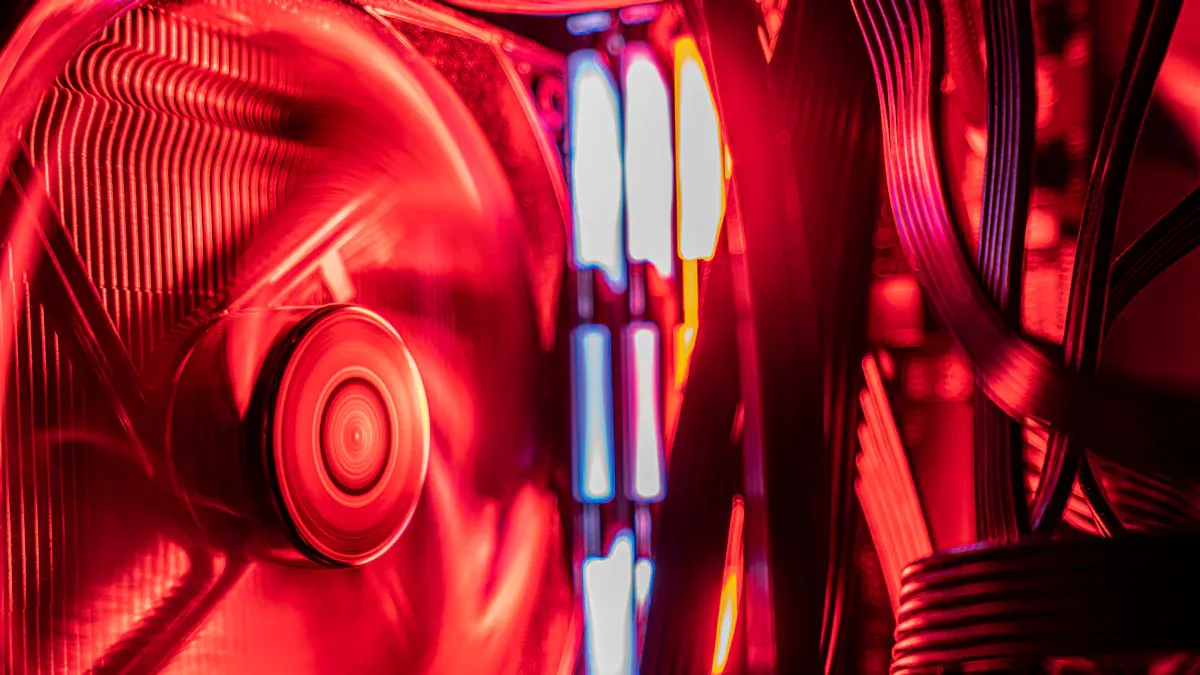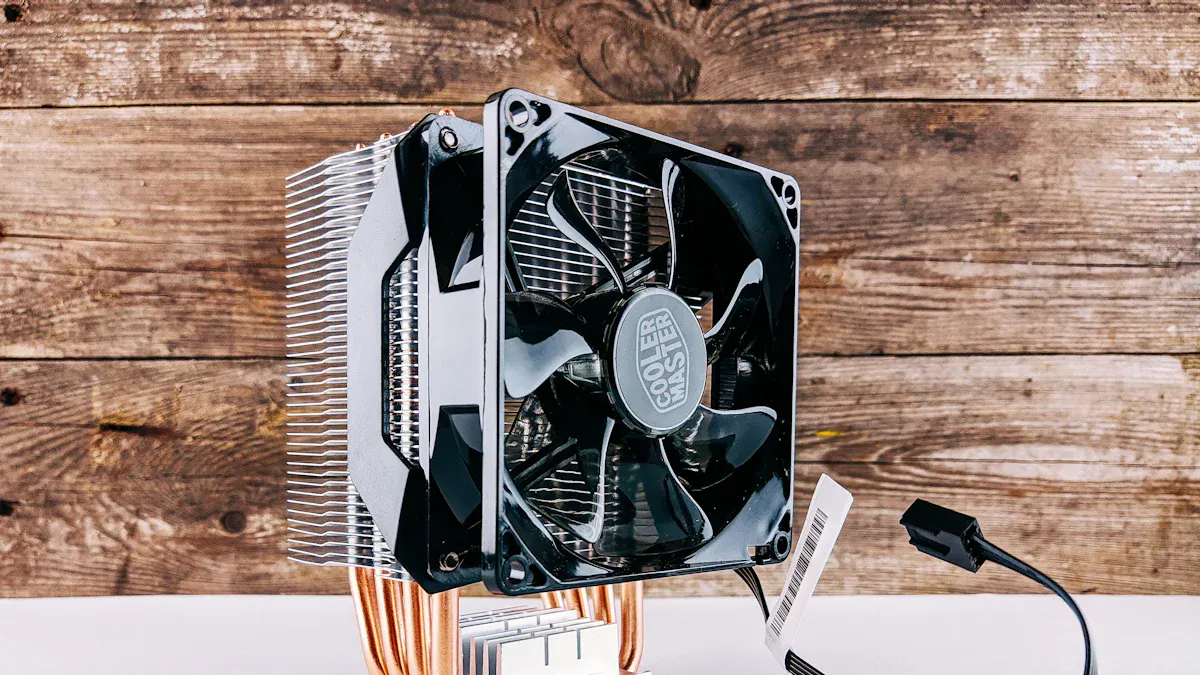
News
Variable frequency drives (VFDs) play a critical role in controlling motor speed and energy consumption. However, the overheating phenomenon of VFD can disrupt motor operation, leading to reduced efficiency and premature equipment failure.
Globally, motors consume about 25% of all electrical energy, with 60-65% of U.S. energy usage attributed to motors. Despite their benefits, only 3% of AC motors are controlled by VFDs, highlighting the need for better management as adoption grows.
In industries like textiles, improved cooling and thermal checks have reduced VFD failures by 70%, proving the importance of proactive strategies.
Understanding the causes of overheating and implementing preventive measures ensures reliable motor performance and extends equipment lifespan.
Key Takeaways
Learn why VFDs overheat, like poor cooling or bad surroundings. Knowing this helps you stop problems early.
Do regular checks and maintenance. Look at cooling parts and clean filters every 3 to 6 months to keep them working well.
Pick the right size VFD for your motor. A good match stops overheating and makes it work better.
Causes of the Overheating Phenomenon of VFD

High-Frequency Switching and PWM Waveforms
High-frequency switching and Pulse Width Modulation (PWM) waveforms are essential for VFD operation. However, they can generate excessive heat in motor windings and cores. The rapid switching creates high-frequency currents, which increase losses in the motor. For example, as shown below, losses grow with frequency:
These losses contribute to the overheating phenomenon of VFD, especially when operating at higher frequencies.
Inadequate Cooling or Ventilation
Cooling systems play a vital role in VFD performance. Without proper airflow, heat builds up, reducing efficiency and reliability. Smaller enclosures often worsen this issue by limiting airflow and creating hot spots. You can improve cooling efficiency by ensuring adequate clearance around the VFD and using fans or heat sinks to dissipate heat effectively.
Environmental Factors (Dust, Humidity, and Temperature)
Environmental conditions significantly impact VFD reliability. Dust and moisture can contaminate components, reducing cooling efficiency and causing damage. High temperatures further exacerbate the overheating phenomenon of VFD. To mitigate these risks:
Maintain proper airflow and clearance.
Use filters to prevent dust accumulation.
Control humidity levels to avoid static electricity issues in low-voltage drives.
Overloading and Improper Sizing of the VFD
Overloading occurs when the VFD operates beyond its capacity. Improper sizing, such as using a larger VFD on a smaller motor, can lead to overheating and costly downtime. Selecting the right VFD for your application ensures optimal performance and prevents unnecessary failures.
Poor Installation Practices
Improper installation often leads to overheating. For instance, inadequate clearance around the VFD restricts airflow, while incorrect enclosure selection traps heat. Maintaining proper thermal management and avoiding harmful environmental factors, such as gases, can prevent premature failures.
Strategies to Prevent the Overheating Phenomenon of VFD

Install Sine Wave Filters or Line Reactors
Sine wave filters and line reactors reduce the high-frequency harmonics generated by VFDs. These components minimize voltage spikes and current distortions, which can lead to overheating. For example, installing a sine wave filter can protect motor windings from excessive heat caused by high-frequency switching. This strategy not only prevents the overheating phenomenon of VFD but also extends the lifespan of connected motors.
Optimize Ventilation and Cooling Systems
Proper ventilation ensures that heat generated by the VFD dissipates effectively. You can improve airflow by redesigning enclosures or adding cooling fans. In one case, a textile factory enhanced its ventilation system, reducing VFD failures by 70%. Passive air cooling and active cooling methods, such as chilled water systems, also improve thermal management. These adjustments significantly enhance VFD reliability and efficiency.
Maintain a Clean and Dust-Free Environment
Dust and debris can block airflow and reduce cooling efficiency. Keeping the VFD clean prevents overheating and ensures reliable operation. Regularly clean heat sinks and fans to maintain optimal performance. Filters can also protect against dust and moisture. For example, housing VFDs in climate-controlled cabinets minimizes exposure to harmful environmental factors.
Monitor and Manage Operating Temperatures
Monitoring operating temperatures helps you detect potential issues early. Infrared imaging and IoT-enabled sensors provide real-time data, allowing you to manage thermal loads effectively. AI-enhanced controllers can adjust fan speeds and pump operations to maintain safe temperatures. These proactive measures prevent the overheating phenomenon of VFD and improve system reliability.
Reprogram VFD for Optimal Volts per Hertz Ratio
Reprogramming the VFD ensures it operates efficiently under varying load conditions. Adjusting the volts per hertz (V/f) ratio optimizes motor performance and reduces heat generation. For instance, modifying V/f patterns can enhance starting torque or improve efficiency for variable torque loads. Proper configuration also prevents overvoltage faults during deceleration.
Perform Regular Maintenance and Inspections
Routine maintenance is essential to prevent overheating. Regularly inspect cooling systems, clean filters, and check for wear or damage. In one example, a textile factory reduced VFD failures by 70% through routine thermal checks and improved ventilation. These practices ensure the VFD operates within safe temperature ranges.
Verify Compatibility Between VFD and Motor
Matching the VFD to the motor prevents excessive heat generation. Mismatched systems can lead to inefficiencies and overheating. Ensure the motor and VFD are compatible in terms of power ratings and operational requirements. Proper enclosures also play a role in thermal management, as they should allow adequate heat dissipation.
Long-Term Considerations for VFD Reliability
Proper Sizing and Selection of VFDs
Choosing the right VFD for your motor is critical for long-term reliability. Proper sizing ensures the VFD can handle the motor's operational demands without overheating or failing prematurely. You should consider key parameters like motor nameplate data, control mode, and overload ratings. For instance, motor nameplate data helps you program the VFD to match the motor's specifications, ensuring optimal performance.
By focusing on these factors, you can prevent the overheating phenomenon of VFD and improve its durability.
Use VFDs with Built-In Overheat Protection
Modern VFDs often include built-in overheat protection, which reduces operational risks. These systems monitor internal temperatures and adjust performance to prevent overheating. This feature is especially useful in environments where enclosures trap heat, as it ensures the VFD operates within safe limits. Built-in protection also minimizes the need for external cooling systems, making it a cost-effective solution for long-term reliability.
Train Personnel on VFD Maintenance and Operation
Educating your team on VFD maintenance and operation is essential for sustained performance. Training should cover safe installation, preventive maintenance, and troubleshooting techniques. For example, teaching personnel how to perform periodic inspections can help identify potential issues before they escalate. Real-life case studies from industries highlight the importance of learning from failures and improving safety protocols. A well-trained team ensures your VFDs remain reliable and safe throughout their operational life.
Addressing the overheating phenomenon of VFD is essential for maintaining reliable motor performance. You can prevent failures by understanding its causes, such as poor ventilation, environmental factors, and improper sizing. Proactive strategies offer significant benefits:
Maintain optimal temperatures to avoid heat spikes.
Improve air circulation for better thermal management.
Adopting these measures reduces downtime, improves efficiency, and extends equipment lifespan. A proactive approach ensures your VFD systems operate smoothly and deliver long-term value.
FAQ
What happens if a VFD overheats?
Overheating can cause the VFD to shut down, reduce efficiency, or damage internal components. This leads to costly repairs and unplanned downtime.
How often should you inspect a VFD?
Inspect your VFD every three to six months. Regular checks ensure proper cooling, clean components, and early detection of potential issues.
Can environmental factors alone cause VFD overheating?
Yes, dust, humidity, and high temperatures can block airflow and reduce cooling efficiency. These factors significantly increase the risk of overheating.
Please give us a message